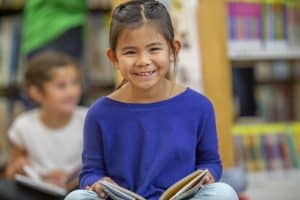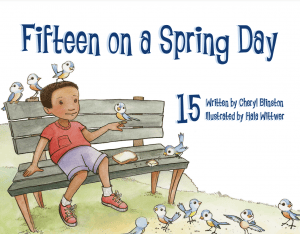Time and time again, studies show that students who learn to love reading are more likely to develop strong reading skills—not the other way around. Libraries can be powerful tools—in your classroom, school, and community—to encourage a love of reading and engage students in learning.
Read on to learn about the benefits of classroom libraries and how to build and organize your own. Then, discover a few ideas for engaging students with your classroom library and celebrating books in National Library Week during April.
Tips for Classroom Library Organization
When building your classroom library, stock your library with books on a variety of topics and genres, including those that might catch the attention of emerging or reluctant readers. The idea is to choose books on topics that interest young students to encourage independent reading
Books can be expensive, so before you spend a lot of money out-of-pocket at a bookstore, consider alternatives like thrift stores or yard sales. Additionally, consider holding a classroom book donation drive. You can also find ideas for free books for your school or classroom from this list of book donation programs for schools.
Find ways to be intentional about building a diverse classroom library to ensure all your students feel included:
- Consider having a diverse library of books in languages other than English for students in your classroom who speak a different language at home. Research shows that encouraging reading in a student’s primary language builds strong literacy skills for all languages that the student speaks.
- Additionally, the Windows and Mirrors framework is a useful guide to make sure your classroom library is organized by books in which students see a reflection of their own and stories that encourage them to see life through another person’s perspective.
Using Your Classroom Library to Engage Students in Reading
Just cultivating a classroom library itself is an excellent way to guide students to an intrinsic love of reading. However, if you have the space in your classroom, consider creating a reading nook with bean bag chairs or big pillows. A cozy space can encourage students to spend time with a good book, and they’re more likely to discover books that they enjoy. Here are a few more ways your classroom library can turn reading enjoyment into reading engagement.
 Read-Alouds
Read-Alouds
Use books from your classroom library in read-alouds as much as possible. This will help familiarize your students with the books they’ll find in your library. For early elementary students, choose a picture or early reader book that will grab their attention and teach early reading skills. As they continue to build their literacy skills, students may also enjoy listening to a chapter book read over a longer period of time.
Check-Out System
Consider allowing students to check out books from your classroom library. Not all children have access to a variety of books at home, and all children benefit from reading time outside of school. You can also introduce your students and their families to the school or local library and encourage them to apply for a library card.
5 Classroom Reading Activities for National Library Week
Because National Library Week is in April, it’s a perfect time to play reading games and activities with your students to engage them with your library. Here are a few great ideas for class or school libraries to use during the month of April (or anytime, really!):
- Put together a classroom competition to see who can read the most books during April. Reward the winner (or your whole class) with their very own book to take home for their hard work.
- Read and discuss the picture book Fifteen on a Spring Day by Cheryl Blinston (available here in Spanish). Talk about what spring is like where you live and how it is similar to and different from the picture book. Go on a nature walk around your school to practice counting different things outside.
- Plan an after-school book swap library activity for kids to trade and share books with each other. Bring a few extra copies for students who may not have access to books at home.
- Have a spring reading party with themed read-alouds.
- For reluctant readers in your class, use these tips and book recommendations to help them find engaging stories in your classroom library.
Looking for more reading lessons and activities for your early elementary classroom? Waterford’s supplemental curriculum has thousands of games, songs, digital books, and activities designed based on the science of reading to help PreK and early elementary students learn reading, math, and science skills.
To get started, you can learn more about how Waterford’s program options can address your students’ needs.

